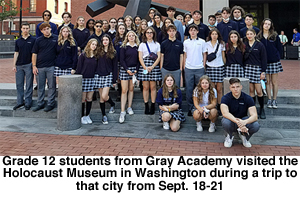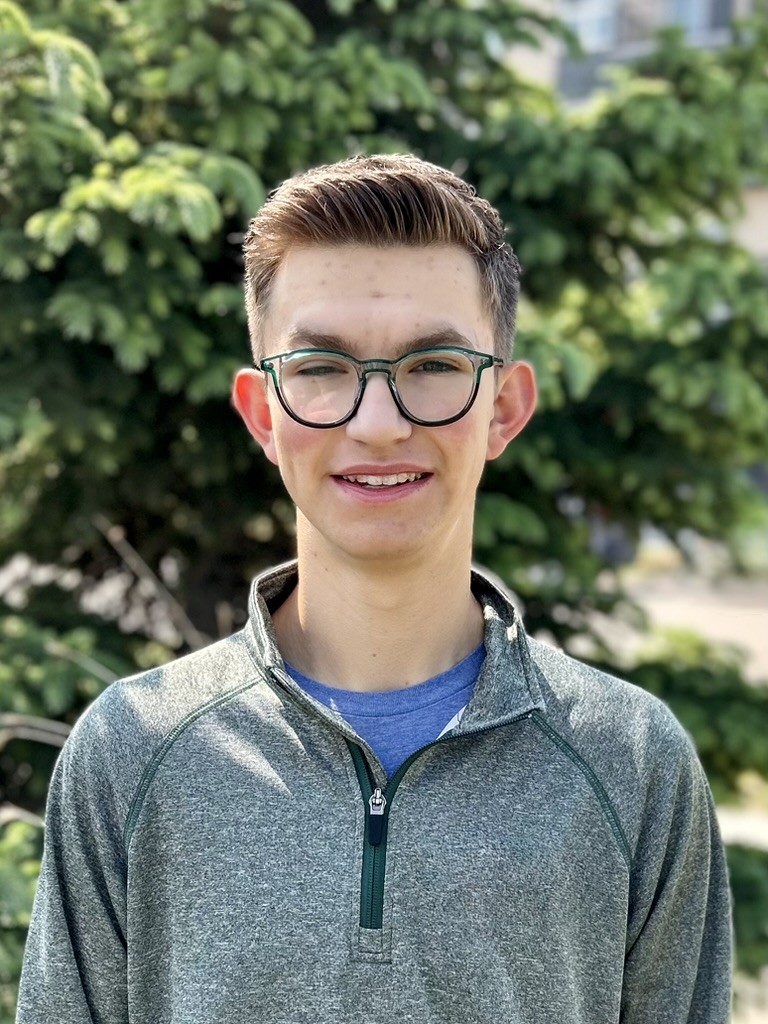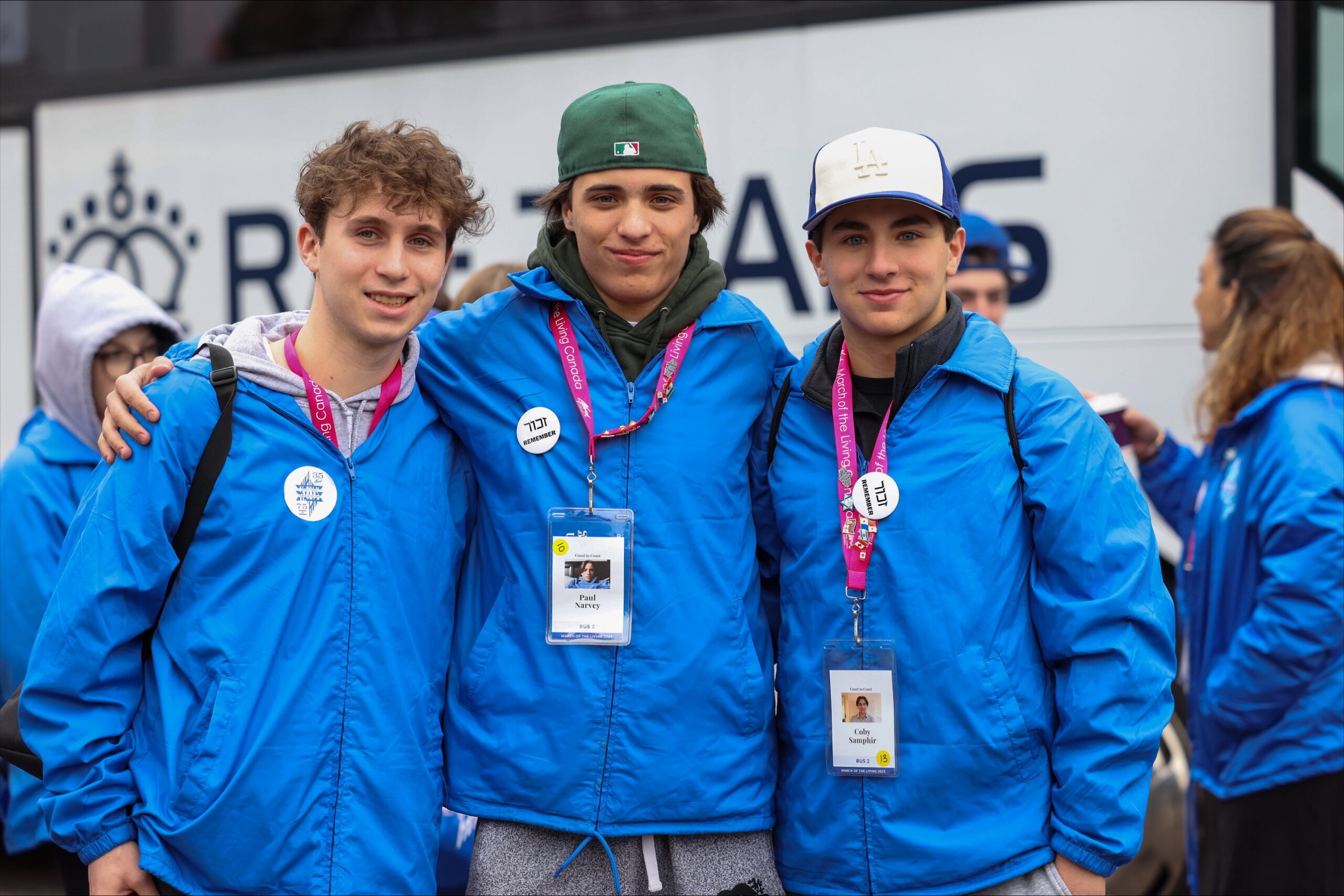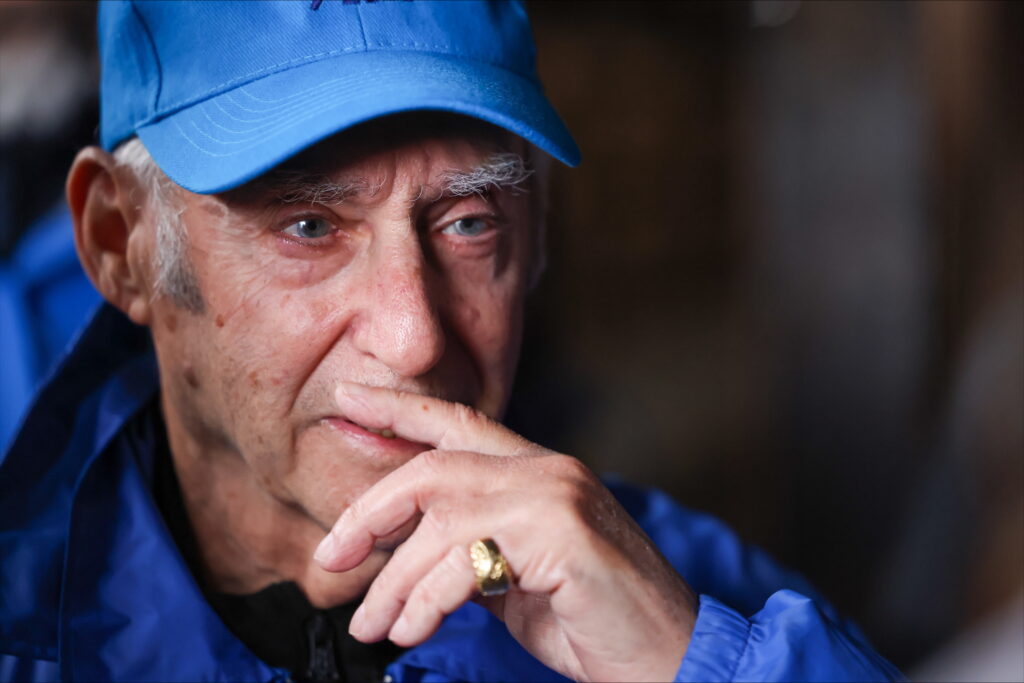Local News
Gray Academy welcomes back students…and gets immediately busy with a whole host of activities
 By BERNIE BELLAN It’s been a while since I’ve been able to report on Gray Academy without having to focus on how Covid had so drastically affected the lives of both students and teachers there. While every other school in the province was similarly affected, Gray Academy offers so many unique programs – almost all of which had to be put on hold for the past two and a half years, that when I spoke with Head of School Lori Binder on Tuesday, September 20, hearing of everything that had been going on there in just the short 11 days that the school had been open when we talked was somewhat overwhelming.
By BERNIE BELLAN It’s been a while since I’ve been able to report on Gray Academy without having to focus on how Covid had so drastically affected the lives of both students and teachers there. While every other school in the province was similarly affected, Gray Academy offers so many unique programs – almost all of which had to be put on hold for the past two and a half years, that when I spoke with Head of School Lori Binder on Tuesday, September 20, hearing of everything that had been going on there in just the short 11 days that the school had been open when we talked was somewhat overwhelming.
I began by asking Lori how it felt to be back – now that all restrictions that had previously been imposed by the province had been lifted?
“It’s a wonderful start to a new school year,” Lori said. “It’s quite positive all around.”
While Gray Academy had complied with all requirements having to do with Covid that had been imposed by the province, Lori noted that “in each of the past two and a half years we did our own due diligence in addition to requirements from the province.”
For instance, Lori referred to the “dashboard” that Gray Academy maintains on its website which gives information about any cases of Covid that may be reported among both students and families of students. (The website is password protected and is accessible only to families of students as well as staff.)
“No other school is keeping a dashboard that I’m aware of,” Lori observed.
With reference to programs and activities that are now back in place after a long hiatus, Lori said: “Almost all of the things that we weren’t able to do are back.”
For instance, she mentioned that a trip that students were originally supposed to have taken in the spring of 2019 to visit the Holocaust Museum in Washington, D.C. – when those students were in Grade 9, was now happening – as we spoke, although the students were now in Grade 12. (Students had left for Washington on Sunday, September 18 and were scheduled to return on September 21. That trip had been an annual event sponsored by the Asper Foundation for years.)
As to whether students who are now in Grades 10 and 11, as well as the current Grade 9 class, will also be able to participate in similar trips to Washington, Lori said that they will, but the timetable for doing that has not been set as yet. She added that the school is working with the Asper Foundation on planning future trips.
Turning to other activities that are back in full swing, Lori noted that “athletics are back,” the musical “Mama Mia” will be put on in February, “band is fully back – with wind instruments” (as well as instruments that don’t require special breathing techniques; there were band sessions during Covid but when you have to wear a mask the amount of music a band can perform is somewhat limited). “And now our kids can sing freely,” Lori added.
Something else that has resumed is the debating program – with members of the debating team scheduled to head to Boston in October 2023.
And – here’s something that I noticed when I attended the G.R.O.W. in Gimli 20th anniversary celebration on September 14 at a house just across from the campus parking lot – and wondered why the parking lot was so full that evening: Gray Academy families were experiencing a “fun fair” (on September 14) for the first time since 2019 – on the grounds of the Asper Campus.
“We had a gathering of all our high school students in the Berney Theatre the first day of school,” Lori observed – but there wasn’t room for all 221 of them – which is an indication of how robust enrollment in the high school is once again. (The Grade 12 class alone has 45 students, which is close to the highest number it’s ever had. Lori said that she’ll have full enrollment figures available to give me by the end of September, noting that a couple of families in the JK-6 years are still in the process of enrolling their kids. She said though that she expects enrollment from JK-12 to be somewhere in the area of 468 students.)
And, while this year’s Grade 12 graduating class currently has 45 students, the 2024 and 2025 graduating classes will also have over 40 students each, if enrollments remain as they currently are.
In some respects, while Covid restrictions may have been lifted, changes that were instituted in the past couple of years, including staggered drop-off and pick-up times, and separate entrances for different age groups, have remained in place.
However, as Lori noted, the physical markings on floors that demarcated different areas for different groups of students have all been removed. “Our kids can all walk freely now,” she said.
I wondered though whether any students are still wearing masks?
“Some are choosing to wear masks,” Lori answered. “As we communicated with families prior to the start of school year, that would be no problem. Our school is a mask-friendly environment.”
I asked also about the HVAC system in the school: How good is the ventilation?
“We still have good respiratory and sanitization etiquette” systems in place, Lori explained. “Our HVAC system is a MERV filter-13 system – one of the best filtration systems available, with the cycle of fresh air intake increased” substantially over what used to be in place.
Insofar as curriculum is concerned, Lori said that the school is about to embark on a two-year project to “reimagine its Hebrew curriculum,” thanks in large part to a grant that it has received from the Jewish Foundation.
As well, a new strategic plan for all of Gray Academy will be launched in January 2023, Lori added.
Speaking of Hebrew, I asked whether the exchange program with Danziger High School in Kiryat Shemona, during which students in Grades 10 and 11 go to Israel, while students from Danziger come here in turn, is back on?
“Yes, it is,” Lori answered, with students from Gray Academy scheduled to travel to Israel this coming Purim. However, rather than students from Danziger coming to Winnipeg this current school year, the plan is for them to come next Sukkot, which begins late September next year.
As far as the graduating class’s usual trip to Israel goes, Lori said “we have enough data to support Grade 12 going,” but with the planned resumption of March of the Living (which has also been on hold for three years) – also around the same time, it is not yet clear how many students might want to go on a graduating class trip to Israel in 2023.
As if reading about all these activities weren’t enough to want to make you pause and take a breath, Lori continued: “Our student council just went on a leadership retreat to Camp Massad” (which was the very first time that’s happened, she noted).
Grades 8 and 9 will also have their own spirit weeks, which often take place in Gimli or Hecla, over the next few months, she added.
I asked about plans for a Shabbaton – which would often take place in Gimli or Hecla in the past?
“This year the Shabbaton will be at the Clarion Hotel,” Lori said.
Some other interesting facts that Lori mentioned during our conversation include:
• This fall year marked marks the 25th anniversary of the opening of Gray Academy.
• The school has more than 65 new students. (Interestingly, some of the students new to the school this year are from Ukraine.)
• 17 students left the school when their parents moved to different cities.
• Once again the school has an international student – from Brazil, the sibling of a previous international student.
• The Kaufman Silverberg Library is once again open to students – something that hadn’t been the case since March 2019. And – for the first time, students can now access digitized books there.
One final note though – and this is more a sign of the times when it comes to restaurants of all types: Schmoozer’s is not accessible to in-person visits by students during school hours – because Schmoozer’s doesn’t have enough staff on hand to accommodate all those students who would typically want to come there for lunch. Instead, arrangements have been made to have lunches delivered to designated drop-off points within the school itself if parents phone Schmoozer’s prior to 9:30 am on a given day and place their orders.
Local News
Further to the Simkin Centre’s financial situation

By BERNIE BELLAN A while back I published an article about the deficit situation at the Simkin Centre. (You can read it at “Simkin Centre deficit situation.“) I was prompted to write that particular article after reading a piece written by Free Press Faith writer John Longhurst in the August 5 issue of the Free Press about the dire situation personal care homes in Winnipeg are in when it comes to trying to provide their residents with decent food.
Yet, Longhurst made one very serious mistake in his article when he wrote that the “provincial government, through the Winnipeg Regional Health Authority, has not increased the amount of funding it provides for care-home residents in Manitoba since 2009.”
In fact, the WRHA has given annual increases to personal care homes, but its allocations are not broken down by categories, such as food or salaries. As a spokesperson for the WRHA explained to me in an email: “PCHs receive per diem global operating funding based on the number of licensed beds they operate. This funding model is designed to support the full range of operating costs associated with resident care, including staffing, food services, utilities, building operations, and other day-to-day expenses.”
Now, one can make a perfectly valid argument that the level of funding from the WRHA has not kept up with inflation, especially inflation in food costs, but the Simkin Centre is in an even more precarious position because of the skyrocketing cost of kosher food.
“In recent years,” according to an article on the internet, “the cost of kosher food has increased significantly, often outpacing general food inflation due to unique supply chain pressures and specialized production requirements.”
Yet, when I asked Laurie Cerqueti how much maintaining a kosher facility has cost the Simkin Centre, as I noted in my previous article about the deficit situation at Simkin, she responded: “approximately $300,000 of our deficit was due to food services. I do not have a specific number as far as how much of the deficit is a result of kosher food…So really this is not a kosher food issue as much is it is an inflation and funding issue.”
One reader, however, after having read my article about the deficit situation at Simkin, had this to say: “In John Longhurst’s article on Aug 5, 2025 in the Free Press, Laurie (Cerqueti) was quoted as saying that the annual kosher meal costs at Simkin were $6070 per resident. At Bethania nursing home in 2023, the non-kosher meal costs in 2023 were quoted as $4056 per resident per year. Even allowing for a 15% increase for inflation over 2 years, the non-kosher food costs there would be $4664.40 or 24% lower than Simkin’s annual current kosher food costs. If Simkin served non-kosher food to 150 of its 200 residents and kosher food to half of its Jewish residents who wish to keep kosher, by my calculation it would save approximately $200,000/year. If all of Simkin’s Jewish residents wished to keep kosher, the annual savings would be slightly less at $141,000.”
But – let’s be honest: Even though many Jewish nursing homes in the US have adopted exactly that model of food service – where kosher food is available to those residents who would want it, otherwise the food served would be nonkosher, it appears that keeping Simkin kosher – even though 45% of its residents aren’t even Jewish – is a “sacred cow” (pun intended.)
So, if Simkin must remain kosher – even though maintaining it as a kosher facility is only adding to its accumulated deficit situation – which currently stands at $779,426 as of March 31, 2025,I wondered whether there were some other ways Simkin could address its deficit while still remaining kosher.
In response to my asking her how Simkin proposes to deal with its deficit situation, Laurie Cerqueti wrote: “There are other homes in worse financial position than us. There are 2 homes I am aware of that are in the process of handing over the keys to the WRHA as they are no longer financially sustainable.”
I wondered though, whether the Simkin Centre Foundation, which is managed by the Jewish Foundation of Manitoba might not be able to help the Simkin Centre reduce its deficit. According to the Jewish Foundation’s 2024 annual report, The Saul and Claribel Simkin Centre Foundation, which is managed by the Jewish Foundation, had a total value of $11,017,635.
The Jewish Foundation did distribute $565,078 to the Simkin Centre in 2024, but even so, I wondered whether it might be able to distribute more.
According to John Diamond, CEO of the Jewish Foundation, however, the bylaws of the Foundation dictate that no more than 5% of the value of a particular fund be distributed in any one year. There is one distinguishing characteristic about the Saul and Claribel Simkin Centre Foundation, in that a portion of their fund is “encroachable.” The encroachable capital is not owned by JFM. It is held in trust by JFM but is beneficially owned by Simkin, similar to a “bank deposit”. While held by the JFM, these funds are included in the calculation of Simkin’s annual distribution.
I asked John Diamond whether any consideration had been given to increasing the distribution that the Jewish Foundation could make to the Simkin Centre above the 5% limit that would normally apply to a particular fund under the Foundation’s management.
Here is what John wrote in response: “The Simkin does have an encroachable fund. That means that at their request, they can encroach on the capital of that fund only (with restrictions). This encroachment is not an increased distribution; rather, it represents a return of capital that also negatively affects the endowment’s future distributions.
”It is strongly recommended that encroachable funds not be used for operating expenses. If you encroach and spend the capital, the organization will receive fewer distribution dollars in the next year and every year as the capital base erodes. Therefore, the intent of encroachable funds is for capital projects, not recurring expenses.”
I asked Laurie Cerqueti whether there might be some consideration given to asking for an “encroachment” into the capital within the Saul and Claribel Simkin Centre Foundation?
She responded: “We are not in a position where we are needing to dip into the encroachable part of our endowment fund. Both of our Boards (the Simkin Centre board and the Saul and Claribel Simkin Centre Foundation board) are aware of our financial situation and we are all working together to move forward in a sustainable way.”
At the same time though, I wondered where donations to the Simkin Centre end up? Do they all end up in the Simkin Centre Foundation, for instance, I asked Laurie Cerqueti on December 15.
Her response back then was: “All donations go through our Foundation.”
I was somewhat surprised to read that answer, so I asked a follow-up question for clarification: “Do all donations made to the Simkin Centre end up in the Simkin Centre Foundation at the Jewish Foundation?”
The response this time was: “No they do not.”
So, I asked: “So, how do you decide which donations end up at the Foundation? Is there a formula?”
Laurie’s response was: “We have a mechanism in place for this and it is an internal matter.”
Finally, I asked how then, the Simkin Centre was financing its accumulated deficit? Was it through a “line of credit with a bank?” I wondered.
To date, I have yet to receive a response to that question. I admit that I am puzzled that a personal care home which has a sizeable foundation supporting it would not want to dip into the capital of that foundation when it is facing a financial predicament. Yes, I can see wanting the value of the foundation to grow – but that’s for the future. I don’t know whether I’d call a $779,425 deficit a crisis; that’s for others to determine, but it seems pretty serious to me.
One area that I didn’t even touch upon in this article, though – and it’s something I’ve written about time and time again, is the quality of the food at the Simkin Centre.
To end this, I’ll refer to a quote Laurie Cerqueti gave to John Longhurst when he wrote his article about the problems personal care homes in Winnipeg are facing: “When it comes to her food budget, ‘we can’t keep making the same number of bricks with less straw.’ “
Local News
Exclusive: Security Enhancement Fund to be announced by Province in coming days

By NOAH STRAUSS The province is set to announce a new program called the Security Enhancement Fund, which
will provide funding to religious and faith groups to improve security at institutions such as
synagogues and mosques. In an exclusive interview, Minister of Justice Matt Wiebe outlined the
plan and detailed what the province has already done to help protect Jewish Manitobans.
“What we want to do is to be able to provide the community with the kind of tools that they need
to stay safe and to ensure that everyone in the community feels safe,” said Wiebe.
The fund will provide a missing link between government and religious communities, and
communities will now be able to make their own choices without money being a big restraint.
Essentially, the power will be in the hands of community leaders and not government officials.
The minister noted that the new partnerships will provide the province a better understanding of
the needs of every community. Rather than the province making the choices, they are
essentially giving a voice to each community. The grants, totalling $1 million, will provide funds to enhance security at facilities like synagogues.
The Jewish Post reached out to Dr. Rena Secter Elbaze, executive director of Congregation
Shaarey Zedek. “It’s important that the government show us that they’re taking security seriously and stepping up to the plate to make this offer. We will absolutely be applying for grant money,” she said. Elbaze also wants to know whether or not the government will cover the costs of things the synagogue has already spent money on. She noted that the province has, in the past, made grants available to have security guards present.
When speaking about what the Justice Ministry has already done to protect Jewish Manitobans,
Wiebe brought up the new special prosecutor that is focusing on hate crimes. Wiebe said the
special prosecutor works closely with the Winnipeg Police Service “to support investigations and
prosecute hate crimes. Wiebe also went on to say how the Department of Education has been helping to fight antisemitism. “The creation of the Holocaust education curriculum is an important step in the right direction,” he said. When asked about Oliver Didtger Ederhof, the individual charged with 14 counts of mischief including vandalism of Shaarey Zedek, Wiebe said decisions like bail and police undertakings are decisions that are in part made by the federal government through the criminal code and policies. “We’re going to continue to advocate for stricter bail reform at the federal level…. I’ve been very clear, we issued clarified directives around bail to our Crown prosecutors.”
The full announcement from the province is expected in the coming days.
Local News
March of the Living 2023 participants form Taste of Hope project to help honour the memory of Holocaust survivor Alex Buckman

By BERNIE BELLAN The March of the Living is an annual two-week international educational program that brings thousands of students and adults to Poland and Israel to study the Holocaust, Jewish history, and the rise of the State of Israel. Founded in 1988, it features a 3-kilometer silent walk from Auschwitz to Birkenau on Yom HaShoah (Holocaust Remembrance Day).
Attendees on the march are accompanied by adults, some of whom themselves have been Holocaust survivors.
Following the week in Poland, participants travel to Israel to observe Yom HaZikaron (Israel’s Memorial Day) and celebrate Yom HaAtzmaut (Israel’s Independence Day), marking a journey from darkness to life.
For many years the coordinator of the march in Winnipeg was Roberta Malam, working on behalf of the Jewish Federation of Winnipeg. More recently Abby Flackman filled that role, and now the person in charge is Lindsey Kerr.
Since its inception 37 years ago the March of the Living has become a rite of passage for many young Winnipeg Jews who have been able to participate as an organized group from Winnipeg and combine visits to the death camp at Auschwitz-Birkenau in Poland with the subsequent trip to Israel.
Then – the Covid pandemic hit – in 2020, and the March of the Living was put on hold for two years – in 2020 and 2021.
In 2022, the March of the Living resumed, but there was no organized contingent from Winnipeg participating. (There may have been some Winnipeggers who did go on the march that year, but if there were any they would have been part of a general Canadian group since there was no Winnipeg coordinator that year.)
In 2023, however, once again a very large contingent of young Canadian Jews – 51 altogether, of whom approximately two-thirds were from Winnipeg, went on that year’s March of the Living. That particular march was memorable for many reasons, including the fact it was the last full march since 2019 and was to remain the last march to have an organized Winnipeg contingent in the past six years as the years 2024 and 2025 were interrupted by the war in Gaza. (There were smaller marches held in 2024 and 2025, but again there was no organized contingent from Winnipeg.)
Recently, we were contacted by one of the participants of that 2023 march, Ethan Levene, who asked us whether we’d be interested in running what turned out be a very poignant story about one particular aspect of that 2023 March of the Living.
Here is what Ethan wrote:
“In April 2023, the Coast to Coast Canadian delegation of March of the Living was privileged to travel with Holocaust survivor Alex Buckman (z”l). March of the Living is a Holocaust education trip that allows participants to visit and bear witness to the sites of the Holocaust. Unfortunately, while sharing his story in Poland, Alex passed away. However, the impact he left on us students was immeasurable.

“While speaking to us in Warsaw, Alex told us the story of his Aunt Becky’s gâteau à l’orange (orange cake). While in Ravensbruck concentration camp, his aunt managed to write down this recipe. After his parents’ murder, his Aunt Becky went on to raise Alex after surviving. In addition to sharing his story, Alex tasked us with baking the cake with family and friends.
“Out of this, a group of alumni from our trip have created this project: ‘A Taste of Hope.’ On February 1st, university students from over 5 universities across Canada will come together to bake the gâteau à l’orange and hear Alex’s story. Proceeds from the event and this fundraising page will support the World Federation of Jewish Holocaust Survivors and Descendants. Alex was heavily involved with this organization, whose mission is to both create community for Holocaust survivors and their descendants and educate about the Holocaust to help fight against antisemitism and all forms of bigotry and hate.
“Here is information from our fundraising page for the event – ‘A Taste of Hope’: Fundraising for A Taste of Hope.
Ethan added that “it’s completely student led, all by alumni from our 2023 trip attending university at these various locations across Canada; Winnipeg, London, Kingston, Montreal.”
He also added: “Follow us on instagram@tastehope.“
Here is a link to a CBC story about Alex Buckman: Alex Buckman story
In a subsequent email Ethan gave the names of Winnipeggers who are involved in A Taste of Hope: Ethan Levene (studies at McGill), Zahra Slutchuk, Alex Stoller (studies at Queens), Coby Samphir, Izzy Silver (studies at Waterloo).
He also added names of others who are involved in the project: Jessie Ages, Anneke Goodwin, Lilah Silver, Ella Pertman, Ellie Vogel, and Talia Cherun.
To find out more about March of the Living in Winnipeg go to: March of the Living


